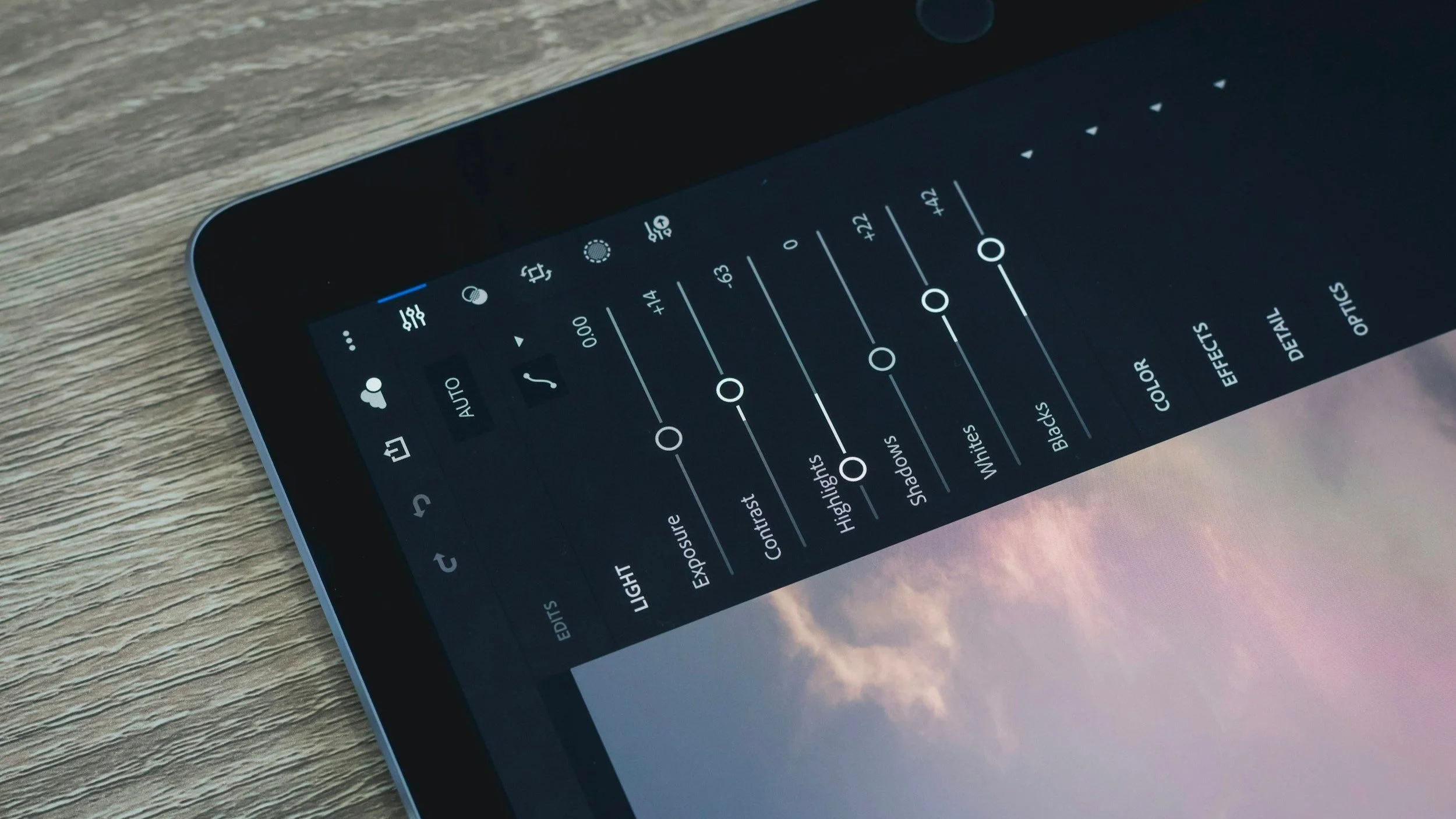When AI Meets Artistry
I remember using film cameras as a kid and having actual albums before the more high-tech cameras and phones came out. There was something magical about waiting to see if that perfect shot actually turned out, carefully placing each developed photo into those plastic sleeves. As I started to grow older and technology started to change, I loved learning how to use Lightroom and Photoshop, but we still didn't have all of the AI tools we do now.
I have seen photography and editing change so much—especially in the last couple of years, they've introduced so many game-changing tools. Quality has improved drastically, and tools are making editing so much more efficient, so we can get photos back to clients in a timely manner. It's honestly incredible how far we've come.
The Magic of Modern Tools
Today's technology is nothing short of amazing. AI can remove unwanted objects with a single click, automatically adjust skin tones, and even suggest composition improvements. My editing workflow that used to take hours now takes minutes for basic adjustments. I can shoot in challenging lighting conditions and know that modern noise reduction will save the day. Cloud storage means I never lose a precious moment, and advanced camera displays let me review shots on location to ensure I've captured everything perfectly.
These tools have genuinely revolutionized how I work. I can focus more time on what matters—being present with my clients, capturing authentic emotions, and crafting images that tell their unique stories.
But Here's What Technology Can't Do
For all its brilliance, AI doesn't know that your daughter always wrinkles her nose right before she laughs. It can't anticipate the exact moment when the bride's face lights up seeing her dress for the first time. It doesn't understand that sometimes the "imperfect" shot—the one with the slight blur from movement or the candid expression between poses—is actually the most beautiful.
Technology can enhance a moment, but it can't create one. It can perfect lighting, but it can't manufacture genuine connection. It can remove blemishes, but it can't add soul.
Finding the Balance
I've learned to use technology as my assistant, not my replacement. And let me be honest—this is harder than it sounds! I'm a perfectionist by nature, and with all these incredible AI tools at my fingertips, I could easily spend hours obsessing over every tiny detail. I'll zoom in to 200% examining whether that one blade of grass in the corner needs to be removed, or if that shadow should be 2% lighter. My husband has become my voice of reason, often finding me hunched over my computer at 11 PM, muttering about pixel-level imperfections. "Honey, these are beautiful—stop torturing yourself over stuff that only you would notice!" he'll often tell me.
He's absolutely right. These AI tools could become my crutch if I let them—enabling my perfectionist tendencies to run wild. But I've learned that sometimes the "flaws" are what make a photo feel real and alive.
AI helps me work faster and more efficiently, but my eye, my experience, and my ability to connect with people remain irreplaceable. When I'm editing, I use AI to handle the technical heavy lifting—noise reduction, basic color correction, background cleanup. But the creative decisions, the mood, the story each image tells? That's all human intuition (and knowing when to step away from the computer!).
During shoots, my camera's advanced autofocus helps me nail focus in challenging conditions, but I'm still the one deciding which moments deserve to be captured. Technology helps me execute my vision more effectively, but it doesn't define that vision.
The Human Element That Matters Most
What clients remember isn't the technical perfection of their photos—it's how they felt during our session. They remember laughing together, feeling comfortable, and seeing themselves through someone else's appreciative eyes. They remember the photographer who noticed their grandmother's ring and made sure to capture it, or who knew exactly when to step back and let a moment unfold naturally.
That's what separates us from AI. We bring empathy, intuition, and genuine care to every session. We understand that photography isn't just about creating beautiful images—it's about preserving precious memories and making people feel valued and seen.
Moving Forward Together
I'm excited about what new technology will bring to photography. I'll continue learning, adapting, and incorporating tools that help me serve my clients better. But I promise you this: no matter how advanced the technology becomes, the heart of what I do will always be about connecting with people and capturing the authentic, beautiful moments that make life meaningful.
Because at the end of the day, technology may capture the image, but only a human can capture the soul.
What aspects of photography technology are you most excited about? I'd love to hear your thoughts in the comments below.
